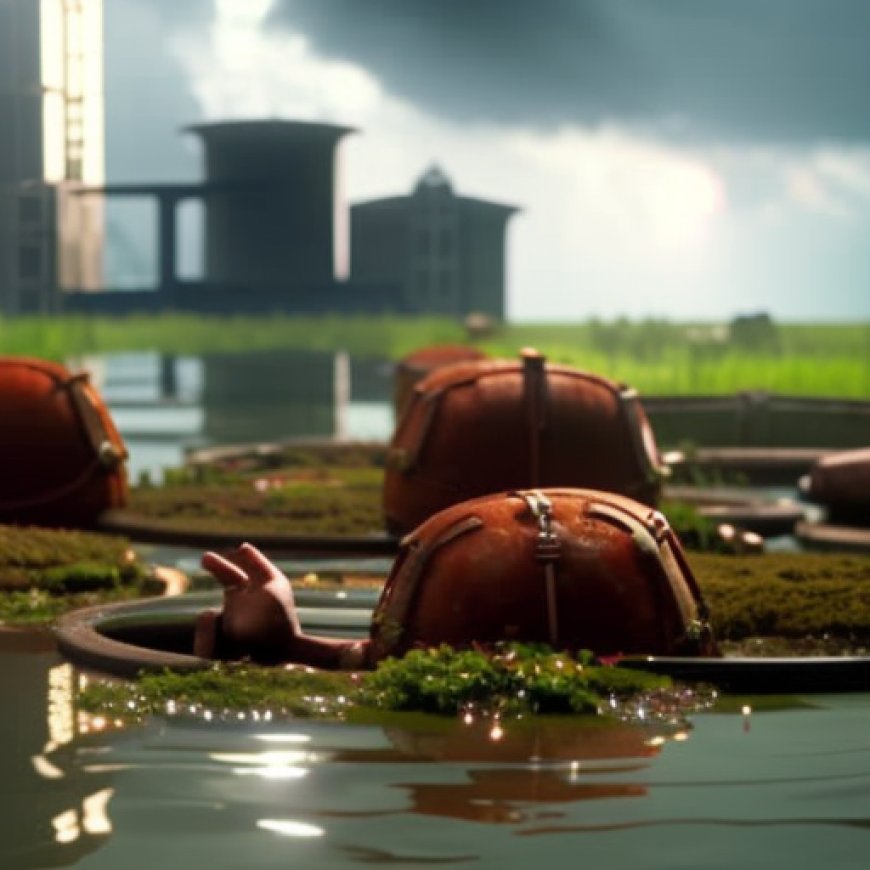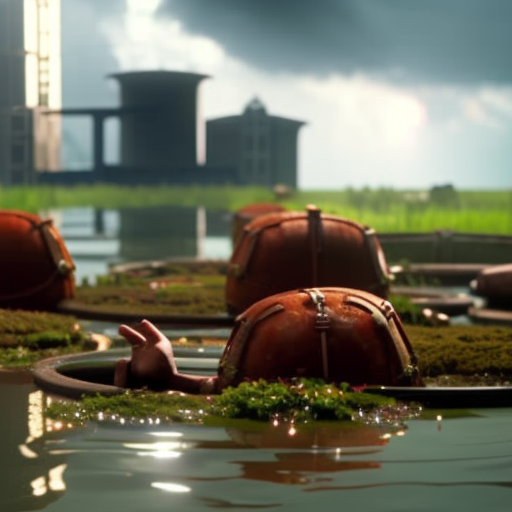How rainwater harvesting has become a lifesaver in Bangladesh
How rainwater harvesting has become a lifesaver in Bangladesh The New Humanitarian


Report: Rainwater Harvesting in Coastal Bangladesh
Introduction
In coastal Bangladesh, the changing climate has brought about a crisis for communities that have relied upon ponds and bore wells for their drinking water for generations: Rising sea levels mean those traditional sources of survival are now contaminated with salt.
The Impact on Communities
The imperfect alternative is drinking pond water – frequently unpurified. This can lead to chronic diarrhoea and other waterborne diseases, made worse if people then drink saline water. Women and children often bear a double burden, suffering particularly serious health effects while also carrying the responsibility of providing water for their families.
Rainwater Harvesting as a Solution
Visual journalist Zakir Hossain Chowdhury travelled to Bangladesh’s western border districts of Satkhira and Khulna, where thousands of residents have found ways to preserve rainwater rather than let it be lost to run-off. While at least 30 million coastal residents have no access to safe drinking water, rainwater harvesting and a new government push to desalinate groundwater are providing a beacon of hope.
Improving Health Outcomes
“There was a high miscarriage rate among women in coastal areas compared to other districts,” but that rate has come down since communities began harvesting rainwater, Shanjana Parvin, a doctor at the Friendship Hospital in Satkhira district, told Chowdhury.
Government Initiatives
Bangladesh averages 2,200 millimetres of rainfall annually – one of the highest amounts in the world. Efforts to capture this sustainable and affordable source of fresh water are transforming lives, while last year the Bangladeshi government eliminated a tax on imported parts needed to run solar-powered water desalination plants, in the hope of lowering costs. The government hopes that ramping up solar-powered desalination will stem the increasing salinity of underground water due to natural disasters like cyclones, rising sea levels, declines in groundwater levels, and changes in upstream river discharge. It announced plans last year to give up to 50,000 coastal communities access to clean water by building 1,500 new desalination plants.
Rainwater Harvesting Techniques
Those affected aren’t waiting around for others to find solutions. They have embraced rainwater harvesting to build their own resilience in the face of the climate crisis.
Simple and Affordable Methods
The simplest method involves using roofs to redirect the rainwater into a tank or cistern. It can then be used in irrigation to sustain crops and plant life. In general, rainwater is also considered clean enough to drink without the need for additional treatment.
Benefits for Communities
Experts say rainwater harvesting can help communities in both flood- and drought-prone areas by providing access to clean water during emergencies, ensuring water security during dry periods, and reducing run-off that can worsen flooding and flood risks.
Case Studies
Filling vessels at Sweet Water Pond
In the Koyra area of Khulna district, women dip jugs into Sweet Water Pond, which has been created by rainwater harvesting. Most of the women have to walk around four kilometres to collect drinking water, and sometimes they make the trip twice a day.
‘Now I can take care of my two children’
Rabeya Akter, 24, collects rainwater from a water tank in the Shyamnagar area of Satkhira district. “Now I can take care of my two children and their education properly,” Akter said, referring to the time she saves not having to walk long distances to other water sources. The tank Akter uses is part of an NGO project to use rainwater harvesting to improve access to clean water for vulnerable communities in coastal Bangladesh.
Women find water close to home
A woman collects water from the rain using a plastic sheet in her yard at Koyra in Khulna district near Sundarban. Traditionally, women in Bangladesh are responsible for collecting water for their families. Rainwater harvesting allows them to collect clean water closer to home, reducing the time and effort spent fetching water from distant and potentially contaminated sources. Being able to collect drinking water close to their homes can also help protect women from gender-based violence.
‘People aren’t capable of paying for it’
Robin Chandra Das, from the Bangladesh-based international NGO Friendship, stands in the desalination plant he monitors in Shymanagar in Satkhira district. During the hot summer season when there is little to no rainwater and the ponds are dry, desalination efforts – which remove the salt from the existing salty groundwater – can be the only good source of water. Friendship has already installed six desalination plants. “Our six water treatment plants in the coastal areas deliver fresh drinking water to more than 80,000 people in the coastal area of Bangladesh,” Das said. Desalinated water from Friendship’s plants costs 10 Bangladesh taka (about $0.10) for 20 litres, but this isn’t always the case. “Where salinity is high, it costs so much to desalinate that people aren’t capable of paying for it,” Das explained.
Conclusion
Rainwater harvesting in coastal Bangladesh is proving to be an effective solution to the water crisis caused by rising sea levels and salinity contamination. It not only improves access to clean drinking water but also enhances agricultural productivity, reduces the strain on municipal water supplies, and empowers communities to become more resilient in the face of climate change. By embracing rainwater harvesting, coastal communities are taking steps towards achieving the Sustainable Development Goals (SDGs) related to clean water and sanitation, gender equality, and climate action.
SDGs, Targets, and Indicators
-
SDG 6: Clean Water and Sanitation
- Target 6.1: By 2030, achieve universal and equitable access to safe and affordable drinking water for all.
- Target 6.3: By 2030, improve water quality by reducing pollution, eliminating dumping and minimizing release of hazardous chemicals and materials, halving the proportion of untreated wastewater, and increasing recycling and safe reuse globally.
- Indicator 6.1.1: Proportion of population using safely managed drinking water services.
- Indicator 6.3.2: Proportion of bodies of water with good ambient water quality.
-
SDG 13: Climate Action
- Target 13.1: Strengthen resilience and adaptive capacity to climate-related hazards and natural disasters in all countries.
- Target 13.3: Improve education, awareness-raising, and human and institutional capacity on climate change mitigation, adaptation, impact reduction, and early warning.
- Indicator 13.1.1: Number of deaths, missing persons, and directly affected persons attributed to disasters per 100,000 population.
- Indicator 13.3.1: Number of countries that have integrated mitigation, adaptation, impact reduction, and early warning into primary, secondary, and tertiary curricula.
Table: SDGs, Targets, and Indicators
| SDGs | Targets | Indicators |
|---|---|---|
| SDG 6: Clean Water and Sanitation |
|
|
| SDG 13: Climate Action |
|
|
Analysis
-
SDG 6: Clean Water and Sanitation
The article addresses the issue of contaminated drinking water in coastal Bangladesh due to rising sea levels and salinity. This aligns with SDG 6, which aims to ensure access to clean water and sanitation for all. The article mentions the lack of safe drinking water for 30 million coastal residents and highlights the use of rainwater harvesting and government initiatives to desalinate groundwater as solutions.
The specific targets under SDG 6 that can be identified based on the article’s content are Target 6.1 (universal access to safe drinking water) and Target 6.3 (improving water quality). The article discusses the use of rainwater harvesting and desalination plants to provide clean water to coastal communities.
The indicators mentioned in the article that can be used to measure progress towards the identified targets are Indicator 6.1.1 (proportion of population using safely managed drinking water services) and Indicator 6.3.2 (proportion of bodies of water with good ambient water quality).
-
SDG 13: Climate Action
The article also highlights the impact of climate change on water sources in coastal Bangladesh. This connects to SDG 13, which focuses on climate action. The article mentions the changing climate, rising sea levels, and natural disasters like cyclones as factors contributing to the increasing salinity of underground water.
The specific targets under SDG 13 that can be identified based on the article’s content are Target 13.1 (strengthening resilience to climate-related hazards) and Target 13.3 (improving education and awareness on climate change). The article discusses the use of rainwater harvesting and desalination plants as adaptive measures to address the impact of climate change.
The indicators mentioned in the article that can be used to measure progress towards the identified targets are Indicator 13.1.1 (number of deaths, missing persons, and directly affected persons attributed to disasters) and Indicator 13.3.1 (number of countries integrating climate change mitigation and adaptation into curricula).
Behold! This splendid article springs forth from the wellspring of knowledge, shaped by a wondrous proprietary AI technology that delved into a vast ocean of data, illuminating the path towards the Sustainable Development Goals. Remember that all rights are reserved by SDG Investors LLC, empowering us to champion progress together.
Source: thenewhumanitarian.org

Join us, as fellow seekers of change, on a transformative journey at https://sdgtalks.ai/welcome, where you can become a member and actively contribute to shaping a brighter future.







